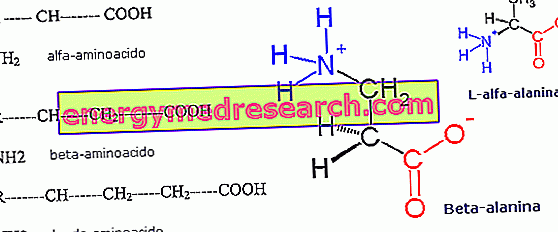What are?
Amylases are fundamental enzymes for the digestion of complex carbohydrates, otherwise known as polysaccharides.
Polysaccharides, such as starch and glycogen, are polymers deriving from the aggregation of more than ten molecules of simple sugars, such as glucose and fructose.

Amylases are mainly produced by the salivary glands and the exocrine pancreas.
Amylase Salivari - Ptialina
On a salivary level we find the enzyme commonly called ptyalin, which begins to degrade starch by releasing maltose and dextrins. For this reason, foods rich in starch but poor in sugar, such as potatoes, rice or bread, when chewed for a long time become slightly sweet. In general, however, given the scarce permanence of food in the oral cavity, this passage assumes little relevance for digestive purposes.
The optimal pH at which amylases operate varies between 6.7 and 7, which is why in the decidedly acidic environment of the stomach (pH 1.5-3) ptyalin is slowly inactivated. This enzyme also fails to digest the starch contained in the granules, which is why it is effective only if the food is cooked. If the starch is raw, the gastric acidity favors the breaking of the granules in which it is enclosed, facilitating the subsequent action of pancreatic amylases.
Pancreatic amylases
The stomach does not produce amylases.
At the duodenal level (first tract of the small intestine), the pancreatic juice containing various digestive enzymes is poured, including the already mentioned alpha-amylase.
How they act
Pancreatic amylases, like ptyalin, attack the starch glucosidic chain at random sites, alternately splitting the α-1, 4 (linear) glucosidic bonds, so as to form molecules of maltose and some of glucose.
The amylases, on the other hand, cannot hydrolyse the α-1, 6 (branched) type bonds present in the amylopectin structure (let us remember, briefly, that starch is made up of two polymers of glucose, one linear, called amylose, and one containing of branching points, called amylopectin).
The amylase action leads to the formation of maltose and glucose starting from amylose, and maltose, glucose and "dextrin limit" starting from amylopectin. The latter contain the α-1, 6 branching sites which, since they cannot be digested by amylases, are attacked by specific enzymes, called dextrinases (1, 6 glycosidases), present in the brush border. At the same level there are other specific enzymes, able to digest disaccharides such as amylose and lactose, freeing mondosaccharides finally available for absorption.
For this action, alpha-amylase is widely used in the food industry. In the preparation of bread, for example, this enzyme generates sugars, which are fermented by yeasts with the production of carbon dioxide (very useful to accelerate the leavening process).
High amylases »



